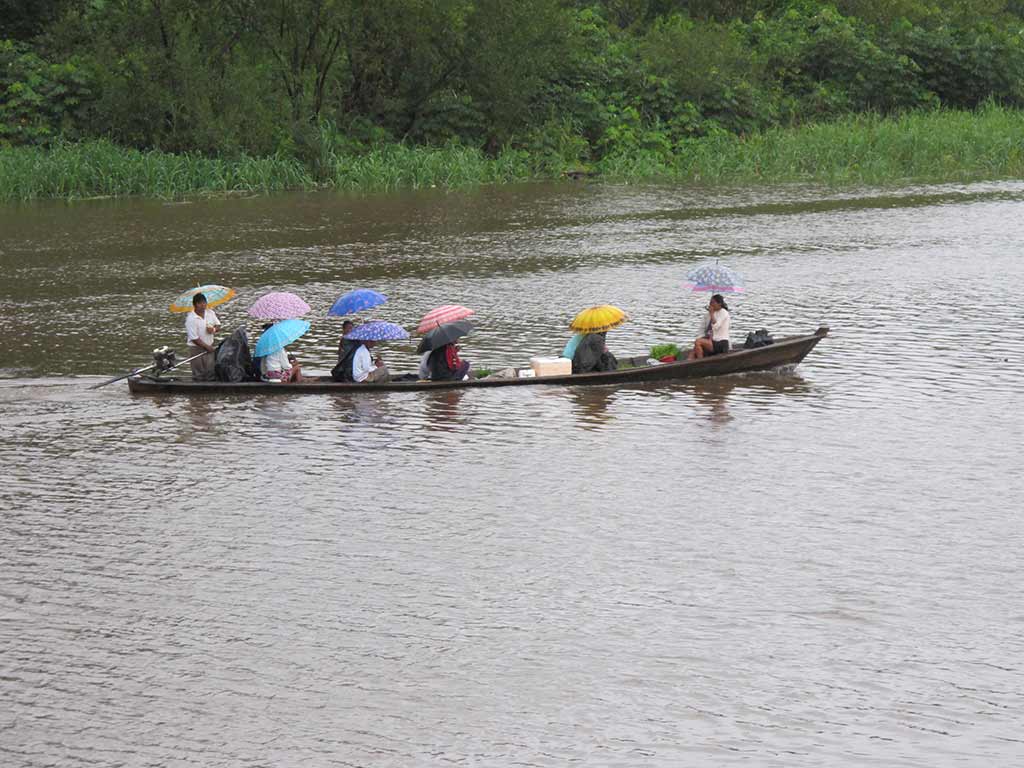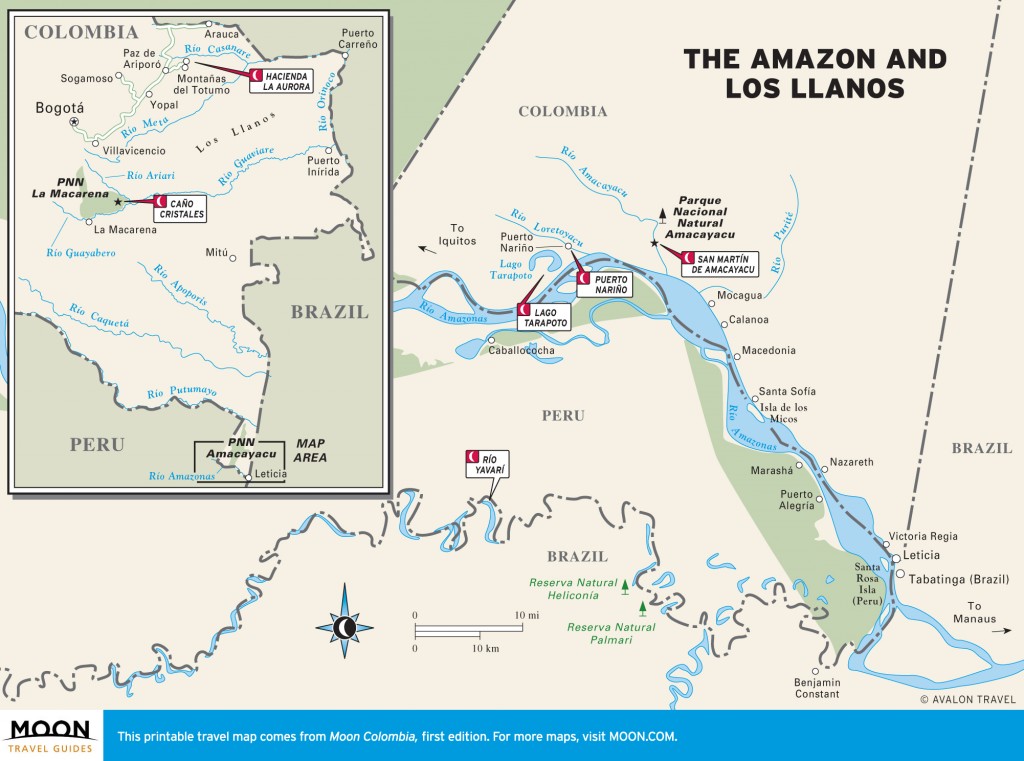The Amazon and Los Llanos cover the eastern two-thirds of Colombia, a vast territory with very little population. Topographically they are the same: low-lying undulating terrain that is periodically flooded. But because of soil and climate, they have evolved different vegetation: dense rainforest in the Amazon and lush tropical savannahs in Los Llanos. The main draw in both the Amazon and Los Llanos is the unique natural landscapes and the magnificent wildlife inhabiting them.

A rainy trip on the Amazon. Photo © Andrew Dier.
The main draw in both the Amazon and Los Llanos is the unique natural landscapes and the magnificent wildlife inhabiting them.A trip to the Amazon is a highlight not only to any visit to Colombia, but a highlight in any person’s life. The survival of this vast ecosystem, the preservation of which is by no means assured, is of great importance to humanity. Learning about its variety of plants and animals, how it acts to stabilize the world’s climate, how indigenous people managed to make a home there for thousands of years without disturbing its balance, and how modern civilization is threatening to destroy it is fascinating. Long after an introduction to Amazonia, one can’t help reflecting on its significance for all of humanity.This vast terrain of undulating hills and savannahs, with large patches of forest, abounds with wildlife: chigüiros (capybaras), deer, armadillos, sloths, anteaters, monkeys, anacondas, and an infinity of birds. Sadly, advancing human settlement and hunting have decimated much of it, but at places like Hacienda La Aurora you can view this wondrous wildlife in all its glory.
The Llanos is synonymous with cattle ranching and the cowboy way of life. If you are not squeamish, viewing traditional cattle-ranching activities, such as herding and branding calves, as they have been done for centuries by llaneros (plainsmen), is an essential Llanos experience. Finally, the Llanos is home to a natural wonder not to be found anywhere else in the world: the vivid red, purple, yellow, and green streams of Caño Cristales in the southern extreme of the remote Serranía de la Macarena.
Traveling in the Amazon and Los Llanos entails long-distance travel, mostly point to point from Bogotá by airplane, and is therefore more expensive. To visit the Amazon, at least five days are required, and more if you want to spend some time in a nature reserve in the rainforest. The destinations in Los Llanos—Caño Cristales and Hacienda La Aurora—could be done in three days, though ideally you would want to spend more time there.

The Amazon and Los Llanos
Though the Amazon rainforest covers about one-third of the country east of the Andes and south of the Río Guaviare, the only real option to visit it is from the Amazon port city of Leticia, which has a multitude of options and ecotourism operators. The rest of the Colombian Amazon simply does not have even the minimum infrastructure to accommodate an independent traveler, and the region may be unsafe.
The great eastern plains of Colombia, Los Llanos, which comprise a further third of the country east of the Andes and north of the Río Guaviare, are the least explored region of the country. The reason is simply a lack of infrastructure, along with, until recently, security concerns.
Excerpted from the First Edition of Moon Colombia.